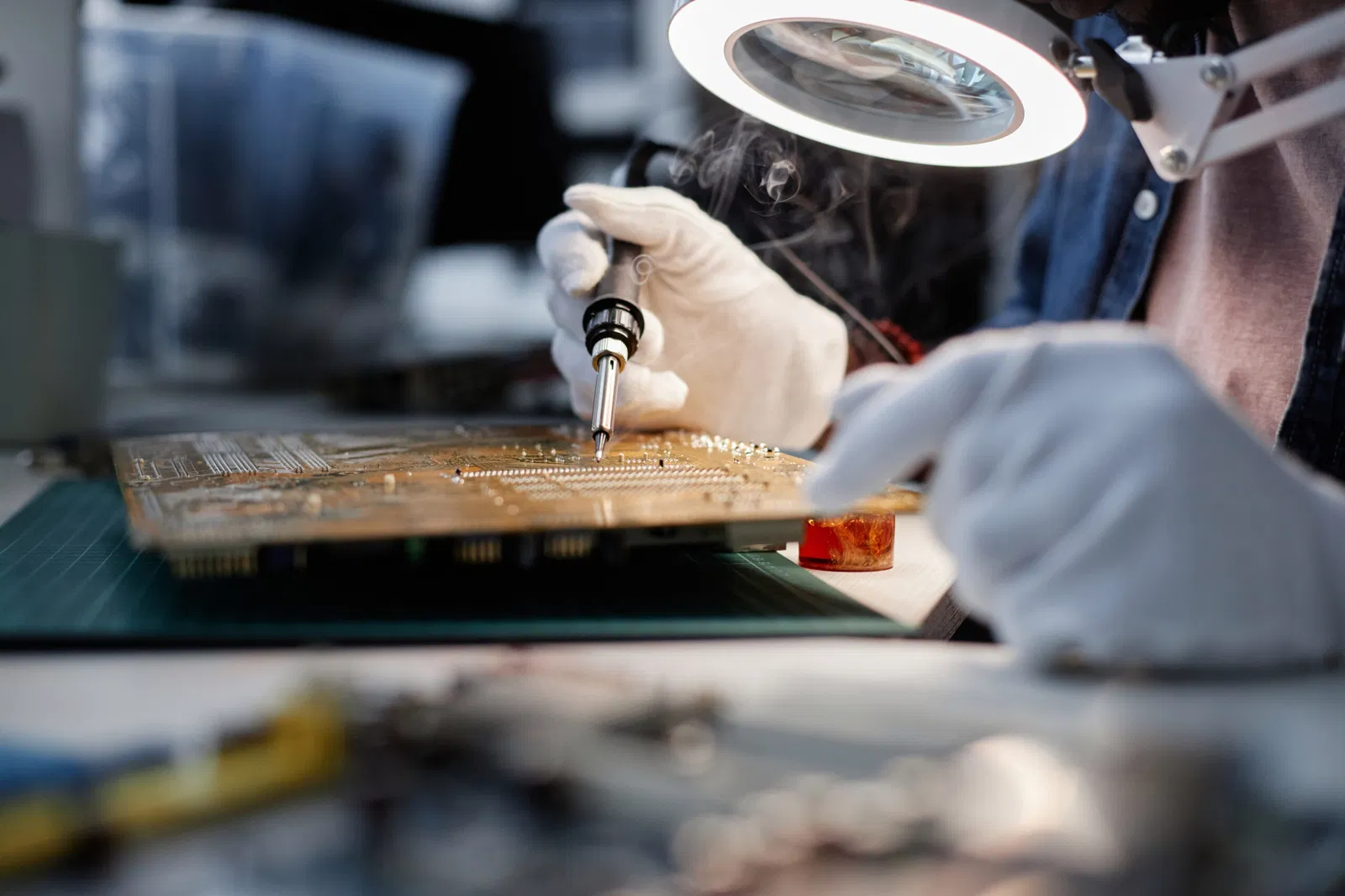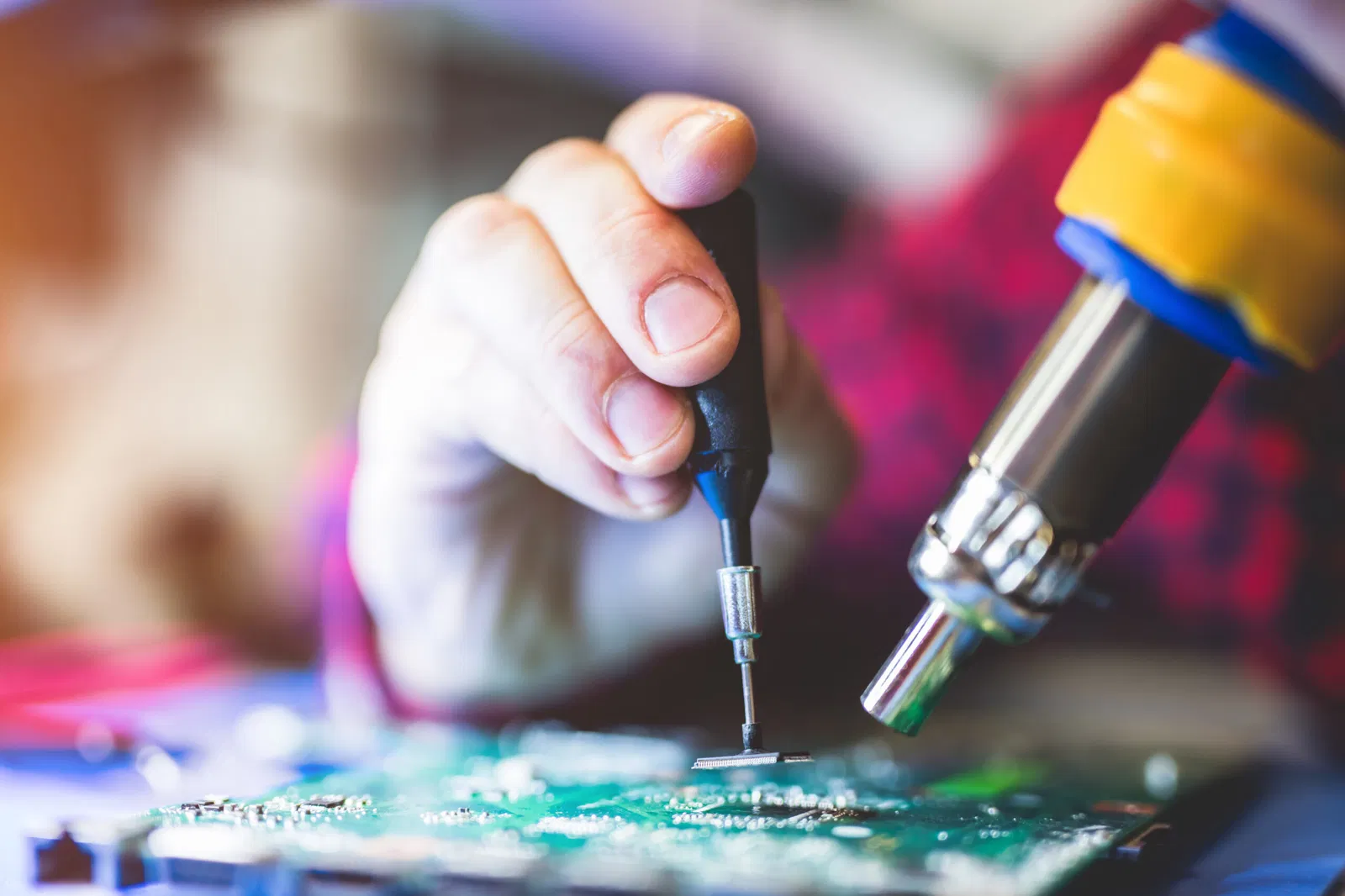Solder paste plays a key role in electronics assembly, enabling the creation of durable connections between components and the PCB. Nevertheless, its use involves many technical challenges that can significantly affect the reliability of the final product. Problems with solder paste arise primarily from its complex chemical composition and the high precision requirements of the soldering process. In response to these challenges, the RENEX Group introduces a solution – the REECO solder paste mixer. With advanced technology and high mixing efficiency, the device helps achieve higher soldering quality and reduces the risk of defects.
Challenges associated with solder paste
Solder paste is a critical element in the PCB assembly process, yet it often causes technical problems that can significantly impact the quality of the final product. One of the biggest challenges in working with solder paste is selecting the appropriate type of paste for specific production conditions and requirements. Each soldering process requires an individual approach that considers both the type of components and the assembly technology. Improperly chosen paste can lead to uneven solder distribution, which weakens the connection structure and increases the risk of failure. Such problems are particularly critical in the miniaturization of electronic devices, where even minor inaccuracies can have serious consequences for the functioning of the entire system.
Paste with improper consistency may spread unevenly across the surface of the circuit, which in turn causes problems with precise soldering. The consistency of the paste can change due to poor storage, excessive exposure to air, or improper mixing conditions. This can lead to solder bridges, cold joints, and other defects that negatively affect the performance of the final product. Improper solder paste consistency is one of the most common problems faced by electronics manufacturers. Paste with improper consistency may spread unevenly across the surface of the circuit, which in turn causes problems with precise soldering. The consistency of the paste can change due to poor storage, excessive exposure to air, or improper mixing conditions. This can lead to solder bridges, cold joints, and other defects that negatively affect the performance of the final product.

The separation of solder paste components, consisting of solder powder and flux, is another significant issue. If the paste is not properly mixed before use, its components may separate. This results in uneven paste distribution on the circuit surface, leading to soldering defects. Such defects can be difficult to detect and may cause serious problems in the operation of electronic devices.

The aging of solder paste affects its properties and, consequently, the quality of soldering. Over time, the paste loses its original properties, which degrades soldering quality. Old paste may have altered consistency, chemical composition, and adhesive properties, which negatively impacts the soldering process. The paste may also become contaminated or oxidized, further worsening its properties.
Improper storage of solder paste can lead to its degradation. The paste must be stored under appropriate conditions to maintain its properties. High temperatures, humidity, and exposure to air can cause the paste to become less effective and harder to use. Storing the paste at low temperatures can also lead to problems, such as too thick a consistency, which makes it difficult to apply the paste to the circuit surface.
REECO solution to these problems
To address many of the issues associated with the use of solder paste, the RENEX Group has introduced the REECO solder paste mixer. The device is designed to ensure the optimal consistency of the paste, eliminating the risk of component separation, which is a common cause of soldering problems. The mixer uses two rotating arms that guarantee thorough mixing of the paste, ensuring its uniformity and high quality.
The REECO solder paste mixer not only improves paste consistency, eliminating the risk of component separation, but also extends its lifespan through optimal mixing conditions and minimal exposure to external factors. As a result, the paste retains its properties for a longer time, which translates to higher soldering quality and reduced risk of defects. Standardizing the paste preparation process significantly reduces variability in results, which is crucial for maintaining high production quality. The mixer technology helps achieve a uniform paste consistency, which is critical for precise soldering. It also prevents component separation, ensuring that the paste is evenly mixed and ready for use. This, in turn, eliminates the risk of defects such as solder bridges or cold joints.

The REECO solder paste mixer stands out with advanced features and meets all safety standards. The device is equipped with a timer for setting the mixing time and a knob for adjusting the mixing speed, as well as a safety module that prevents the cover from being opened before the process is complete, ensuring the highest level of safety during use. By enabling the simultaneous mixing of two paste containers, the mixer significantly increases work efficiency. Universal holders, compatible with most commercial containers, make it a versatile tool for various applications. The process of preparing solder paste in the REECO mixer is simple and intuitive – after setting the appropriate parameters, the device automatically begins the mixing process, and an audible signal informs about its completion, making the process efficient and safe.
